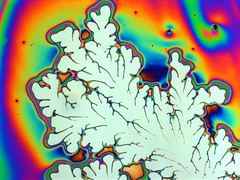 If there’s one clear cut hope for the future of energy, its that a completely clean and renewable source of energy, like the sun, could one day come to completely replace our current addiction to fossil fuels. Solar energy, if applied properly could provide the Earth with years of nearly endless power with virtually no environmental drawbacks. However, there are some major hurdles to clear before this dream of a sustainable future through solar energy could become a reality. Currently, the biggest drawback to solar panels is the low efficiency of these devices, even under constant sunlight. Most photovoltaics today only run at a top efficiency of 20%, making them mere complements to other energy sources, rather than complete replacements.
If there’s one clear cut hope for the future of energy, its that a completely clean and renewable source of energy, like the sun, could one day come to completely replace our current addiction to fossil fuels. Solar energy, if applied properly could provide the Earth with years of nearly endless power with virtually no environmental drawbacks. However, there are some major hurdles to clear before this dream of a sustainable future through solar energy could become a reality. Currently, the biggest drawback to solar panels is the low efficiency of these devices, even under constant sunlight. Most photovoltaics today only run at a top efficiency of 20%, making them mere complements to other energy sources, rather than complete replacements.
Despite these setbacks, new research from across the world has recently made some large leaps towards higher solar efficiency. A team working at the University of Michigan has recently begun testing the use of quantum dots made of selenide rather than silicon; their experimentation has shown that using selenide lowered the rate of heating in the semiconductor metals, thereby increasing the amount of total solar energy that is transferred into direct current. At the current rate, the team estimates that this new way of building solar panels could raise the overall efficiency up to 66% or higher. This is a very promising result,” said U of M graduate student William Tisdale. “We’ve shown that you can pull hot electrons out very quickly – before they lose their energy. This is exciting fundamental science.”
In addition to the work being done by U of M students, the Dutch government is currently planning to give out grants to prominent scientists for work in developing solar panels using nanorods, which can increase the maximum efficiency by more than 30%, and can be built in a cost-effective manner. “If the Netherlands wants to timely participate in a commercial exploitation of nanowire solar cells, there is a great urgency to get on board now.” says Jos Haverkort, one of the researchers receiving the grant. With continuing research, Haverkort hopes to be able to present a nanorod based cell with an efficiency of around 65%. If solar panels are to become a cost-effective solution to the energy crisis facing contemporary society, increasing their total electrical output will have to be a key priority. And with the rate of technological innovation moving forward at an astounding rate, the dream a renewable and sustainable energy may only be years away.
